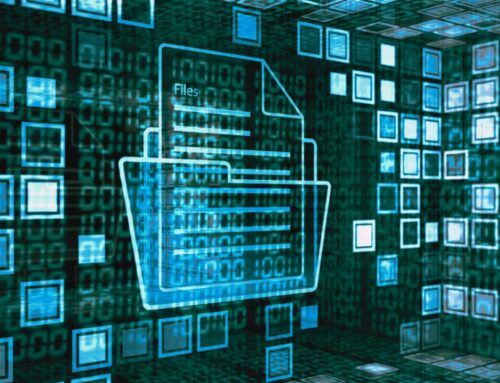Every day, people all over the world use a lot of paper. But did you know that most of this paper actually began as computer files? People print stuff for convenience, but the original digital file is usually still on a computer somewhere. The same goes for all those papers in your office. Many of them started as digital files too. Your company should try to save as many records electronically as possible. It might be tricky to deal with older paper documents, but for new ones, it’s important to treat them like digital data in an automated electronic records management system. This makes things easier and gives your record managers more time for important tasks. Now, let’s find out about electronic records management and its best practices
At a Glance:
What is Electronic Records Management (ERM)?
Electronic file and document management as records is known as electronic records management, or ERM. Using automated methods, electronic records management, manages records in any format. The broadest word for electronically managing documents in a variety of formats—electronic, paper, microform, etc.—is electronic records management. It ensures streamlined control of documents held in computer systems, and making sure they stay useful from creation to deletion. The primary distinction between ERM and conventional records management pertaining to tangible documents is the approach. As a component of a digital business process, ERM records information. It is like the careful librarian of digital documents in a company. It’s all about keeping the digital files organized and safe from the moment they’re created until they’re no longer needed.
Check Out Our Ultimate Checklist for Choosing an ERM System
Attached at the end of this post….
What is an Electronic Records Management System?
An electronic records management system (ERM) is a software that manages electronic files and documents as records. The key difference between ERM and traditional records management of physical records is the focus. With electronic records management (ERM), you can be sure that your company has the records it requires, when it requires them. The term “records management” describes a group of tasks necessary to methodically regulate the production, sharing, utilization, preservation, and disposal of recorded data kept as proof of commercial dealings and operations.
An ERM captures records as part of a digital business process. You are preserving the original digital records, not paper copies that pile up in boxes in storerooms or warehouses. This enables you to create efficiencies by improving automation of your business activities, providing accurate auditing and applying your records schedules reliably.
With the use of an electronic records management system, your company can regain complete control over its documentation, replacing antiquated manual record-keeping procedures with sleek, user-friendly digital systems that need no effort to search, backup, and secure.
An automated electronic record management system (arms) covers various tasks, from sorting and storing records to finding and safely getting rid of them when it’s time. It’s kind of like a well-organized digital filing system that follows all the rules.
To make this happen, an electronic record keeping system uses technology, along with policies and procedures, to manage digital records efficiently. It helps keep the data secure, easy to find, and ensures that everything follows the law, reducing the chances of data loss, unauthorized access, or breaking of any rules.
Why companies need an ERM?
In today’s digital age, companies are drowning in a sea of electronic records. Contracts, invoices, emails, and reports pile up, creating chaos and hindering productivity. This is where electronic records management (ERM) System comes in, acting as a life preserver for companies drowning in information overload.
ERM systems offer a multitude of benefits that translate to a healthier bottom line. First, they streamline organization, transforming messy file systems into searchable databases. Finding crucial documents becomes a breeze, saving countless hours wasted on frantic digging. Second, ERM boosts security by implementing access controls and audit trails, safeguarding sensitive information from unauthorized eyes. Third, compliance becomes a walk in the park, with automated retention schedules and legal holds ensuring adherence to regulations. Finally, ERM fosters collaboration by enabling real-time document sharing, breaking down information silos and driving better decision-making.
So, why do companies need ERM? It’s simple – it’s the difference between swimming with sharks (paper records) and cruising on a yacht (digital records). It’s about reclaiming control, optimizing workflows, protecting data, and ultimately, staying afloat in the ever-growing ocean of information.
Types of Electronic Records Management System Software?
Businesses also use different tools to manage their digital stuff, especially important records. There are a few main types, like Document Management Systems (DMS) for electronic documents, Content Management Systems (CMS) for all sorts of stuff, Email Management Systems for emails, and Records and Information Management (RIM) Software for organizing everything. Let’s check out what each of these does and why they’re handy for businesses.
1. Document Management Systems (DMS):
2. Content Management Systems (CMS):
3. Email Management Systems:
Advantages of Automated Records Management System:

Electronic records management software is super important for modernizing how companies handle digital data. Some people worry it might make things more complicated or expensive, but when you team it up with other digital organization tools, it actually brings lots of benefits.
Imagine you’re dealing with digital documents. It helps you automatically collect important info about them, which makes finding and using them easier. It also helps keep track of any changes and who gets to see them. Plus, it’s a time-saver for finding stuff quickly when you need it.
It also helps with searching for specific documents in a big digital pile. And when it’s time to get rid of old documents, it makes sure they’re properly destroyed.
Another cool thing is that it helps organizations follow the rules and stay on the right side of the law. So, they can focus on what they do best while an ERM system takes care of the digital paperwork.
Additionally, some quick points to understand the importance of ERM:
What Capabilities Should an ERM System Have?
Electronic records management systems have been around since the late ’90s and were initially meant to work with document management systems. Over time, they evolved to adapt to the digital age.
Also, traditional approaches simply digitized paper-based data management, missing out on the benefits of digital data. Modern electronic file management software recognize that digital documents are scattered across various sources like SharePoint, email, and data stores. They automatically organize and retrieve records, making them easily accessible, no matter where they’re stored.
Finally, these modern document management systems go beyond managing records; they offer real-time tracking, providing snapshots of what’s happening in the organization and how it impacts business processes. Electronic record keeping system are like digital wizards that help businesses make sense of their information and use it effectively.
Following are its Key Features:
Factors to Consider When Selecting an ERM System:
When you’re choosing an electronic record keeping system for your company, there are two important things to think about: how much risk your organization faces and how advanced your information management systems are. These factors are connected but give you different insights to help you make the right decision.
Firstly, let’s talk about risk. You need to check how your records are being handled right now. Are they already organized in a management system? Imagine if something happened and you needed to find your records quickly. Storing them on people’s computers and sharing them through email can be risky.
Additionally, let’s look at how advanced your information systems are. Mature organizations make sure all their tech works together smoothly, which helps the company run better. But if you’re only using email and basic financial tools, you might not be taking full advantage of what’s possible.
Hence, by considering these two things, you can figure out if you need an automated electronic records management software that collects all your records in one place or one that helps manage them where they are now.
Checklist of important factors to consider when choosing an ERM:
Conclusion
To conclude, an Automated Records Management System (ARMS) is like a super-smart organizer for a company’s digital files and documents. It keeps everything in order, safe, and easy to find from the moment they’re created until they’re not needed anymore.
Furthermore, there are different types of electronic record keeping system systems, each with its own specialties, like managing documents, all kinds of content, or emails. They come with cool features like tagging files, setting rules, and making sure only the right people can access them.
When picking an electronic records management software, organizations need to think about how much risk they’re facing and how tech-savvy they are. That way, they can choose the right one that fits their needs and helps them stay organized in the digital world.




